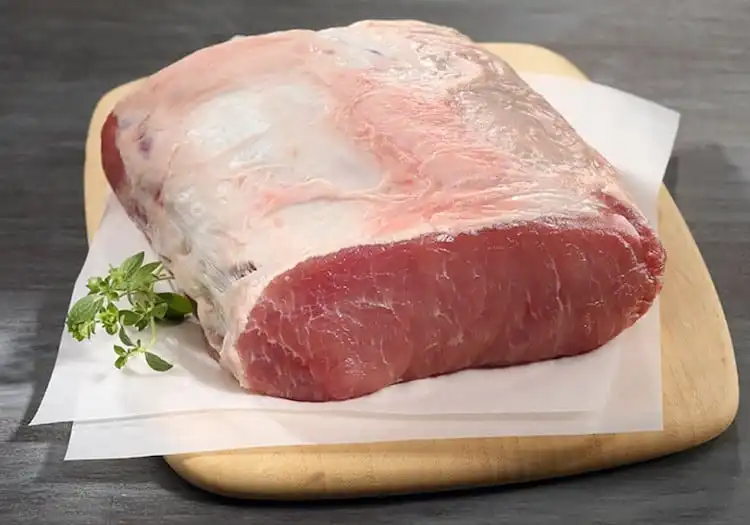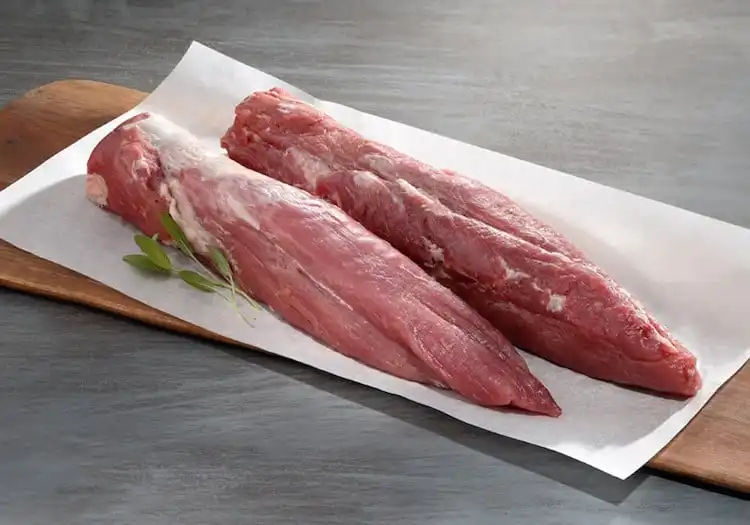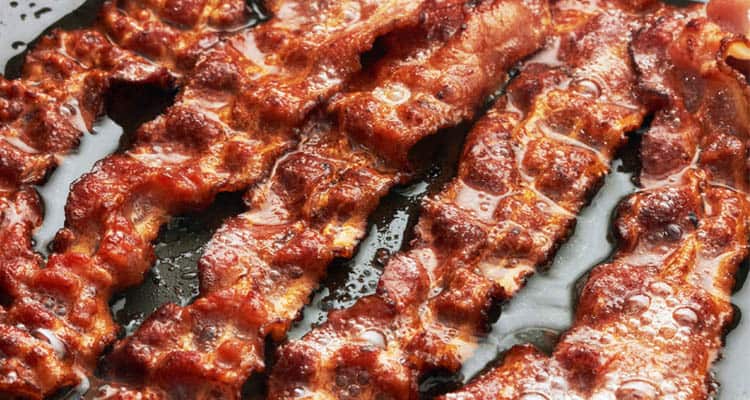What’s the difference between Pork Loin and Pork Tenderloin?

Do you know your pork tenderloin from your pork loin? They may sound incredibly similar, but pork loin and pork tenderloin are two very different cuts of pork.
Widely available and each boasting their own individual qualities, if you want to get the best out of your cooking, you must be able to tell these two popular cuts apart to avoid disappointment in the kitchen.
In this article, we explain the key differences between pork loin and pork tenderloin, how to recognize them and how best to cook them for delicious results.
What’s the main difference between pork loin and pork tenderloin?
While both come from the back area of the pig, pork loin and tenderloin are very different cuts. Each has a different shape, size, and texture, as well as their own recommended cooking methods.
Check out our smoked pork tenderloin recipe.
- Pork loin is sourced from higher up on the back of the pig and is a much larger, thicker cut than tenderloin. It helps to think of it as several pork chops joined together prior to slicing.
- Pork tenderloin comes from below the loin cut. Unlike pork loin, pork tenderloin is a long, thin slice of muscle taken from along the edge of the backbone.

Can you substitute pork loin for tenderloin?
The quick answer is no. While there’s nothing wrong with occasionally bending the rules and finding kitchen workarounds, you cannot simply substitute pork loin for tenderloin or vice versa.
Due to the differences between these cuts, your recipe is highly-unlikely to go to plan. The temperatures and cooking durations required for one cut will be inaccurate for the other, so the worst-case scenario is that you end up with a ruined meal and a waste of food, time, and effort.
Therefore, it is important that you’re able to tell the difference between the two so that you can adapt your cooking procedures and temperatures appropriately.
With this in mind, let’s take a closer look at these two equally fantastic, yet very different cuts and what you need to know to identify and cook them for delicious results.
All about pork loin
Pork loin is a lean, premium cut that’s both highly popular and incredibly versatile. Here’s the low-down on one of our favorite pork cuts.

Here are some of the most common names for pork loin:
- pork loin chop
- pork loin roast
- pork back ribs
- pork loin center cut
- pork loin center rib roast
Bear in mind that a full pork loin (as opposed to a boneless pork loin center) will contain other cuts such as the sirloin and loin rib end. Therefore, if you’re looking for a center cut only, be sure to tell your butcher.
Where the pork loin is cut from
Pork loin is cut from the upper back of the pig. It’s a large piece of meat taken from the area between the shoulders and the rump on each side of the backbone.
Defining characteristics of pork loin
Pork loin is available both bone-in with ribs attached or boneless. Whole pork loins tend to be sold with a layer of upper fat known as the ‘fat cap’.
Pork center loin is a large, wide cut of boneless, lean meat. Your average pork loin center will weigh around three to five pounds. It tends to be mild in flavor and can be deliciously tender if cooked low and slow.
Cooking methods
There are many ways to enjoy cooking with pork loin. Let’s take a look at some of the most popular methods:
Sliced into steaks
You can slice up pork loin to create pork steaks and cook them individually. These are known as pork loin chops or pork rib chops.
It is recommended to always cut your pork loin chops at least three-quarters of an inch thick so that they don’t dry out during the cooking process. Cooking your loin chops with the bone attached can make cutting trickier, but will also help to stop your chop drying out.
You can pan-fry your pork loin chops on a medium-high heat for around 6-8 minutes depending upon the thickness. Some people prefer to brine their pork chops before cooking at a low temperature after a quick pan sear.
It is very easy to overcook and dry out pork loin chops, so faster methods or gentle heat with liquid are the best ways to go.
Whole pork loin roast
Pork loin center can also be oven roasted whole and sliced to serve.
This is a popular roast that is much cheaper than its beef counterpart but still equally delicious when cooked correctly. If possible, include the backbone for added flavor.
Tip, to make slicing easier, ask your butcher to remove the backbone, and then you can tie it back on for cooking, or to cut it in several places so you can easily cut it into servings.
When oven roasting your whole center pork loin, we recommend that you oven bake it for 20-25 minutes per pound, at a temperature of 350 °F until it reaches an internal temperature of 145-160 °F.
You can also place it in your crockpot or braise it on low for deliciously tender results.
Crown roast
A crown roast of pork is when you have two racks of pork (two loins with the backbone removed and the ribs trimmed of meat) tied together into a circular configuration.
This can be an extra-special looking dish that’s ideal for special gatherings and family celebrations. For truly juicy results, oven cook your crown roast with the slab of fat attached.
A crown roast of pork usually weighs around 10 pounds. It is recommended that you oven roast it for 10-12 minutes per pound at 350 °F until your meat thermometer displays 145-160 °F.
Pork loin recipes
Hungry for some more mouth-watering recipe ideas? Our favorites are Bourbon brown sugar smoked pork loin and Garlic and herb stuffed pork loin.
All about pork tenderloin
Pork tenderloin is the most expensive, most highly-prized cut of pork. Let’s take a look at what makes it so special.

Pork tenderloin is also commonly known as pork tender or pork filet.
Where it’s from
Pork tenderloin is cut from an area of the upper back that’s very close to where pork loin is cut. It is a part of the thin muscle that runs directly alongside the backbone, above the ribs and belly.
It is the most tender cut of pork as it is used primarily for maintaining posture, rather than movement.
Defining characteristics
Pork tenderloin is a boneless cut of meat. It has a delicate, mild flavor, absorbs marinades well and cooks quickly. As tenderloins are long, thin cuts of pork, they tend to weigh around one to one and a half pounds.
Cooking methods
Pork tenderloin is a tasty and versatile cut that can be roasted, smoked, or grilled, either whole or sliced.
Whole pork tenderloin
If cooking whole, it’s recommended that you oven roast it at 425 °F for 20-25 minutes until it reaches 145-160 °F internally.
Once you’ve removed it from the oven, be sure to leave it to rest for several minutes before serving to redistribute the internal juices for tender, tasty meat. You could also broil or grill it for around 20-30 minutes for optimum tenderness and slice to serve.
Sliced pork tenderloin
Alternatively, you can slice your raw tenderloin crosswise and sautee the sliced medallions for a fast and nutritious meal. Cut the medallions around one-inch thick and quickly pan fry for just a few minutes to prevent them from overcooking and drying out.
Because it cooks quickly, thinly sliced pork tenderloin is great for stir-fries, where spicy sauces will really boost its mild flavor.
Pork tenderloin recipes
Although tenderloins are exquisitely tender when cooked correctly, their mild flavor is best enhanced with a marinade, stuffing, or tasty sauce.
Our smoked pork tenderloin recipe uses an easy maple bourbon glaze for a sweet kick

Wrapping it up
So there you have it. While they sound incredibly similar and come from the same area of the hog – pork tenderloin and pork loin are chalk and cheese when it comes to cooking.
Pork loin is a large, thick cut with a fat cap from the upper back that is available both boned and boneless, while pork tenderloin is a thin, long and especially lean cut from alongside the backbone. Both of these cuts are equally delicious, but each requires very different cooking methods to ensure tender and juicy results.
What do you think? Do you have a favorite cut or a tasty pork loin recipe you’d like to share? If so, be sure to leave us a comment below!









